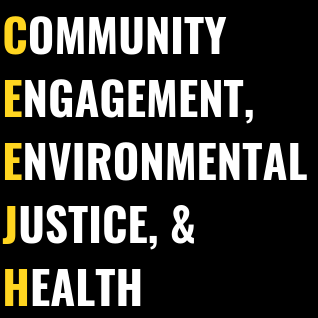Fighting Concrete Block and Traffic Emissions in Bladensburg, MD
The Ernets Maier (EMCo) Concrete Block Plant in Bladensburg, Md.
Residents of Bladensburg, Maryland, who are predominantly African-American and/or Latino, are faced with environmental hazards because Bladensburg is an industrial corridor with a school bus depot, a trash company, Ernest Maier concrete block plant, other industrial facilities and a high volume of industrial traffic. In addition to the industrial traffic, the community has high daily volumes of commuter traffic due in part to its proximity to Washington, DC and the College Park campus. Many residents in the Port Towns of Bladensburg, Cottage City, Colmar Manor, and Edmonston are in opposition to the special exception permit requested by Ernest Maier to construct a concrete batching plant on its property. Residents are organizing and working with Port Towns Environmental Action (PTEA) to ensure that the expansion does not happen. They are concerned about the proximity of the plant to historic sites which may lead to stormwater runoff, air and noise pollution, traffic congestion, thus, affecting the public health and safety in their community.
Courtesy of US Environmental Protection Agency, 2019
The Kingdom Missionary Baptist Church parishioners must routinely contend with emissions from the EMCo concrete plant—less than 500 feet away. Church organizers must arrive early before mass each Sunday to shovel concrete dust from the church’s entrance.
One of the biggest contributions of the CEEJH team has been using low-cost sensors such as the Airbeam and Atmotube to provide data on temporal and spatial variation in human exposure to PM and VOCs due to commuter traffic, industrial traffic, and industrial activities near the concrete block plant. We have investigated diurnal patterns based on time of day and rush hour traffic by conducting air quality assessments and traffic counts during morning on-peak (rush hour), afternoon off-peak, and evening on-peak (rush hour) periods. Our data indicates that there is spatial and temporal variations of PM2.5 and VOCs across Bladensburg. We observed higher mean PM2.5 and VOC levels in the morning compared to afternoon and evening. There were higher PM2.5 and VOC levels at locations closer to the concrete block plant and heavily trafficked roadways.
We have provided technical assistance to PTEA about the health impacts of the concrete batch plant, industrial traffic, and commuter traffic. We have participated in public forums and workshops about air quality and health impacts and also performed some citizen science training in the use of low-cost real-time sensors to measure particulate matter and VOCs. In addition, Dr. Wilson has provided testimony about the impacts of the concrete plant on air quality and human health in regards to the special exception application.
We are currently working with PTEA to build a hyperlocal air quality monitoring network using Purple Air sensors as stationary monitors for PM10, PM2.5, and PM1. We also plan to perform more citizen science training with local residents and help trainees monitor their personal exposure to particulate matter and VOCs.



